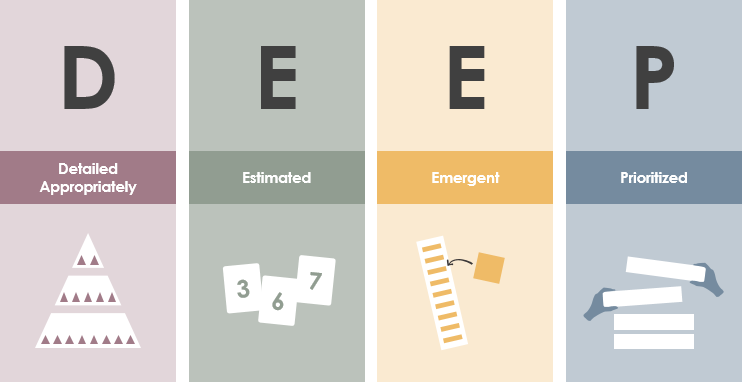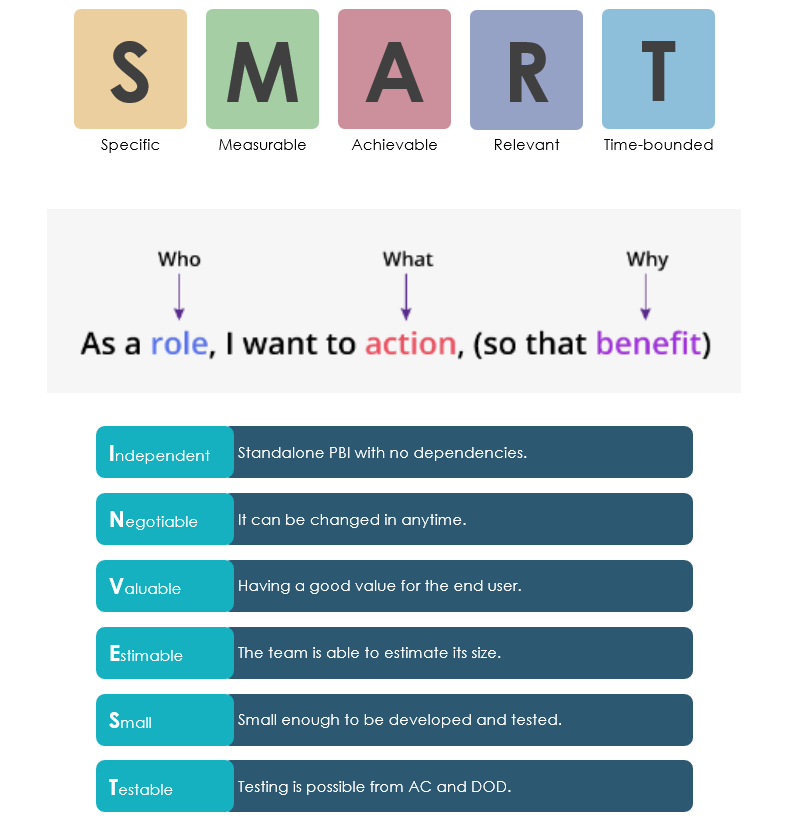Home » Agile & Scrum » Page 5
Introduction In the world of Agile development, the product backlog stands as a cornerstone of efficient project management. It's a dynamic and living document that outlines the features, enhancements, and bug fixes that need to be developed in a software project. The product backlog is essential for prioritizing work, aligning the team's efforts with customer needs, and ensuring that the project stays on track. In this article, we'll explore what a product backlog is, its importance in Agile methodology, and how to effectively manage it. What Is a Product Backlog? A product backlog…
continue reading →
Introduction In the realm of Agile development, user stories serve as essential building blocks for communication between development teams and stakeholders. However, to ensure these stories are implemented correctly and meet the desired objectives, acceptance criteria are indispensable. Acceptance criteria provide the specific conditions and expectations that a user story must fulfill to be considered complete. But what's the best way to structure these criteria? In this article, we delve into three popular acceptance criteria templates: Given-When-Then, Behavior-Outcome-Expectation, and Role-Feature-Reason. We will explore the pros and cons of each template and discuss when…
continue reading →
In Agile development, the user story is a fundamental building block for delivering value to the customer. These concise descriptions of desired functionality capture the 'who,' 'what,' and 'why' of a feature or requirement. However, to ensure that user stories are both actionable and testable, Agile teams often employ a technique called "Give / When / Then" (GWT) acceptance criteria. This method helps to define the expected behavior of a user story in a clear and unambiguous manner. What Are Acceptance Criteria? Acceptance criteria are conditions or rules that a user story must…
continue reading →
User stories are a fundamental component of Agile development, serving as concise descriptions of functionality from an end user's perspective. To ensure that these user stories are well-understood and can be properly tested, it's crucial to draft clear and comprehensive acceptance criteria. In this article, we'll delve into the art of writing acceptance criteria for user stories, providing practical examples along the way. What Are Acceptance Criteria? Acceptance criteria are specific conditions that a user story must meet to be considered complete. They serve as a guideline for both developers and testers, ensuring…
continue reading →
Agile development has revolutionized the way software is created. It places a strong emphasis on collaboration, adaptability, and customer satisfaction. One of the cornerstones of Agile methodology is the use of user stories, a powerful tool that helps teams focus on delivering value to end-users. In this article, we'll explore what user stories are, how they work, and why they are crucial for successful Agile development. Understanding User Stories A user story is a concise, informal description of a software feature from the perspective of an end-user or customer. It is not a…
continue reading →
In the ever-evolving world of software development, efficiency and collaboration are the keys to success. Whether you're an Agile aficionado or a Scrum enthusiast, Visual Paradigm is here to revolutionize the way you manage your projects. With a full set of Agile backlog and process management tools, Visual Paradigm empowers your team to take control of your projects and make them more effective than ever before. User Story Mapping Made Effortless Visual Paradigm takes the complexity out of user story mapping with its intuitive drag-and-drop interface for story creation and arrangement. No more…
continue reading →
Introduction Use Case and User Story are two different techniques used in Agile software development to capture and communicate requirements, and they serve slightly different purposes. Whether one is better than the other depends on the specific needs and preferences of the Agile team and the project context. Let's explore the differences and use cases for each: Use Case: Purpose: Use cases are typically used to describe the functional requirements of a system from the perspective of an external actor (usually a user or another system). Format: They are often represented as structured…
continue reading →
Introduction Agile development methodologies have revolutionized the software development landscape by emphasizing collaboration, adaptability, and iterative development. While Agile practices like Scrum and Kanban have gained widespread adoption, it's crucial not to overlook the importance of effective requirements management in Agile projects. Use case modeling serves as a valuable bridge between customer needs and software implementation in Agile development. In this article, we will explore how to effectively apply use case modeling in Agile projects to enhance communication, streamline development, and deliver high-quality software. The Role of Use Case Modeling in Agile Use…
continue reading →
The Product Backlog is a critical component of Agile product development. It is a living document that lists all features, functions, requirements, enhancements, and fixes that need to be developed for the product release. Effective Product Backlog Management is essential to ensure that the product meets the needs of its users and stakeholders. The DEEP framework is a set of guidelines that can help teams manage the Product Backlog effectively. What is a DEEP Framework DEEP stands for Detailed Appropriately, Estimated, Emergent, and Prioritized. Each item in the Product Backlog should be detailed appropriately, estimated in story points, emergent, and prioritized based…
continue reading →
What to Write Effective User Stories User stories are a crucial part of the product development process, serving as a tool for capturing user needs and guiding the development of new features and functionality. However, writing effective user stories is not always easy. It requires a deep understanding of the user, the product, and the business goals, as well as the ability to communicate clearly and concisely. In this article, we will provide a comprehensive guide for product teams on how to write effective user stories. What is a User Story User stories…
continue reading →






